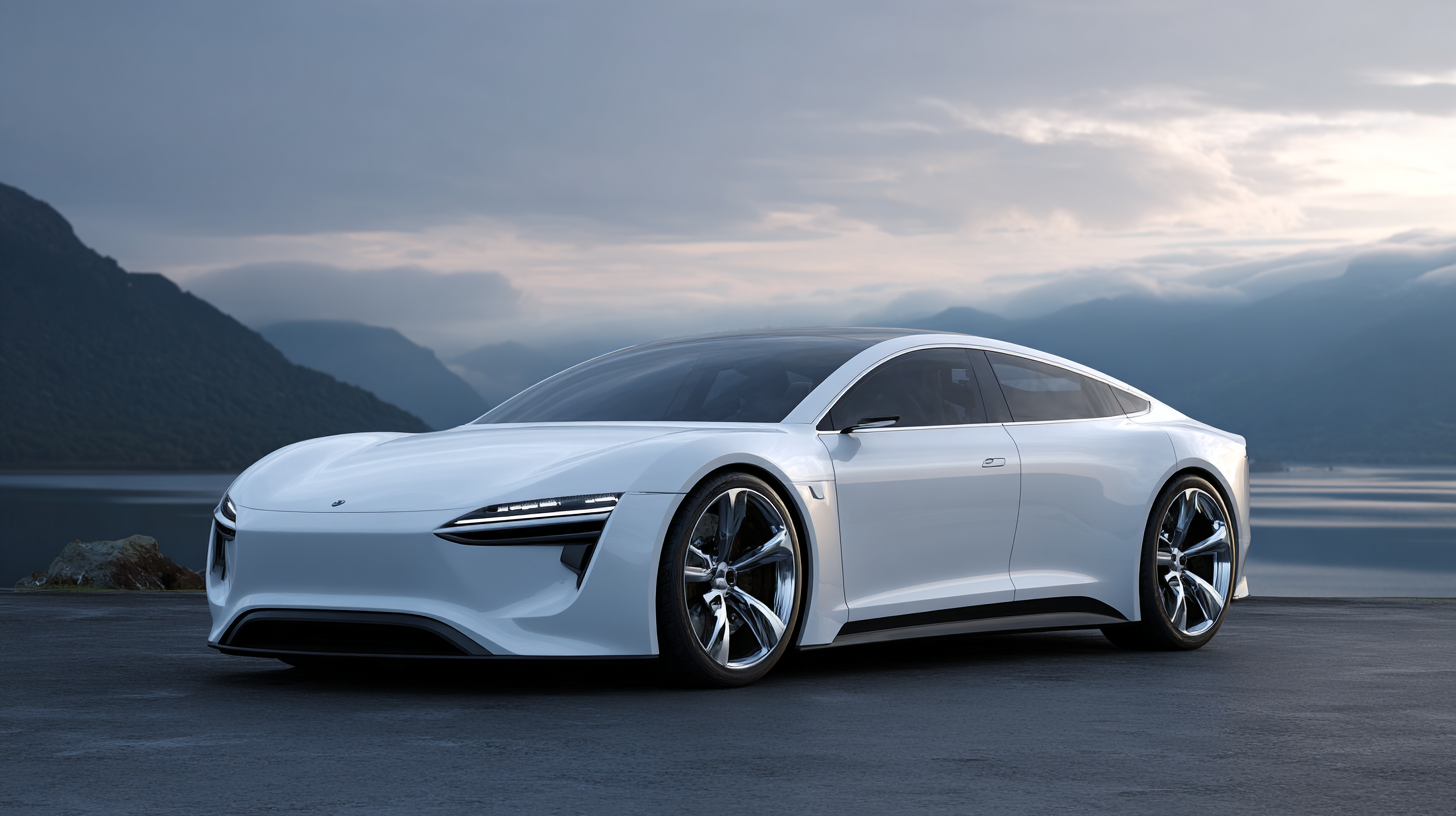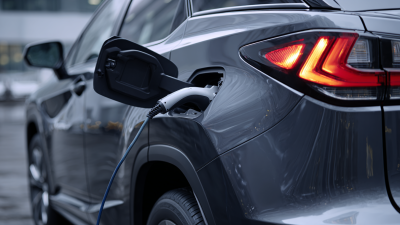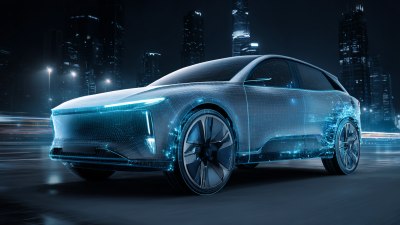As the world increasingly shifts towards sustainable transportation, the role of Fully Electric Cars (FECs) is more crucial than ever. According to the International Energy Agency (IEA), the global electric vehicle stock surpassed 10 million units in 2020, a number expected to increase dramatically as governments enforce stricter emissions regulations and consumers push for greener alternatives. Innovations in battery technology, such as solid-state batteries, are revolutionizing the efficiency and range of FECs, addressing one of the primary barriers to widespread adoption. Furthermore, reports from McKinsey & Company predict that by 2030, up to 70% of new car sales could be electric, signifying a significant transformation in mobility patterns. This continual evolution not only presents substantial opportunities for the automotive industry but also plays a pivotal role in combating climate change and promoting a sustainable future.

In the dynamic landscape of 2025, the electric vehicle (EV) market is set to experience remarkable growth, reshaping the future of sustainable transportation. With the US electric vehicle market projected to reach USD 131.3 billion in 2024 and witness a compound annual growth rate (CAGR) of 13.6% through 2034, the momentum is clear. Nearly 22 million battery-electric and plug-in hybrid passenger cars are expected to be sold globally this year, marking a significant leap of a quarter compared to 2024 figures.
Tips: When considering an electric vehicle purchase, keep an eye on market trends and projections. Understanding the upward trajectory can help you make informed decisions regarding investments in sustainable transportation.
As EVs continue to rise, they are not just transforming the auto industry but also influencing global oil demand. The International Energy Agency's analysis shows that with rising emissions, the shift toward electric vehicles is substantially reducing reliance on oil-powered transportation. This trend indicates a pronounced need for consumers and industries alike to embrace innovative solutions that promote environmental sustainability.
Tips: Stay updated on technological advancements in battery innovation, which are pivotal in driving the growth of electric vehicles. Innovations in battery technology can enhance range and performance, making EVs an even more attractive option for potential buyers.

Advancements in battery technology are pivotal in shaping the future of fully electric cars, significantly enhancing their range and reducing costs. The development of solid-state batteries has emerged as a game changer, offering higher energy densities compared to traditional lithium-ion batteries. This technology not only extends the driving range of electric vehicles (EVs) but also improves safety by minimizing flammability risks. Research is ongoing to refine these batteries further, making them lighter and more efficient, which will be crucial for maximizing performance in next-generation EV models.
Moreover, cost-reduction strategies in battery production are also transforming the market. Innovations in sourcing materials, such as recycling and alternative chemistries, aim to decrease dependency on scarce resources like cobalt. As manufacturing processes evolve and economies of scale come into play, the overall expense associated with electric vehicle batteries is expected to decline significantly. This affordability will make fully electric cars more accessible to the mass market, paving the way for widespread adoption and a more sustainable transportation future.
| Battery Type | Energy Density (Wh/kg) | Cost per kWh ($) | Estimated Range (miles) | Charging Time (hours) |
|---|---|---|---|---|
| Lithium-ion | 250 | 120 | 300 | 8 |
| Solid State | 400 | 150 | 500 | 4 |
| Lithium Iron Phosphate | 160 | 90 | 200 | 6 |
| Nickel-Manganese-Cobalt | 220 | 135 | 350 | 5 |
The widespread adoption of fully electric cars hinges significantly on the expansion of charging infrastructure. As more consumers consider transitioning to electric vehicles (EVs), the availability of convenient and efficient charging options becomes crucial. Urban areas and highways must see increased installations of charging stations to alleviate range anxiety— the fear of running out of battery far from a charging point. Innovative solutions, such as fast-charging networks and solar-powered stations, are essential for boosting consumer confidence and encouraging purchases.
Moreover, integrating charging infrastructure with renewable energy sources can enhance the sustainability of electric vehicles. By using off-peak electricity or locally sourced greens, charging stations can minimize their carbon footprint, making EVs an even more attractive option for environmentally-conscious consumers. Government incentives and partnerships with private companies can further accelerate infrastructure development. As this ecosystem grows, it will create a robust framework supporting the rising popularity of electric cars, positioning them as a viable and eco-friendly alternative to traditional gasoline vehicles.
This chart illustrates the growth of charging infrastructure across key regions over the past five years, highlighting the correlation between the number of charging stations and the increasing adoption of electric vehicles.
Governments worldwide play a crucial role in promoting the shift towards electric vehicles (EVs) through policies and incentives that encourage both manufacturers and consumers. For instance, in Indonesia, recent efforts to extend tax incentives have significantly boosted electric vehicle sales from just 125 units in 2020 to over 43,000 in 2024. This remarkable growth underscores the effectiveness of strategic government interventions in fostering an environment conducive to EV adoption.
Similarly, countries like Norway have set ambitious goals for sustainability by enforcing policies that aim for all new cars sold to be electric by 2025. The combination of subsidies and aggressive incentives has established Norway as a leading example in the global electric vehicle market. However, contrasting scenarios in the U.S., where federal incentives for EVs have been reduced, highlight how the absence of supportive policies can hinder progress and slow down the adoption of cleaner transportation alternatives.
Effective government action is essential in steering the global move toward sustainable electric vehicles, ensuring that momentum is maintained in the face of varying commitments.
The electric vehicle (EV) market is witnessing a dynamic shift in consumer behavior, driven by innovation and increased awareness of sustainability. Insights reveal that consumers are progressively more inclined to embrace fully electric cars as they become more accessible and affordable. This transition is not only changing consumer preferences but also influencing the broader automotive landscape, with traditional manufacturers adapting to meet the rising demand for more sustainable transportation options.

As highlighted by various studies, key trends point toward a growing percentage of consumers prioritizing eco-friendliness, advanced technology, and overall ownership experience. The anticipated growth in consumer interest reflects a broader acceptance of EVs, as well as a shift in expectations regarding features and performance.
Furthermore, the used car market is poised to expand significantly, indicating that the demand for electric vehicles is not limited to new models, but is increasingly extending to pre-owned options. In this evolving landscape, manufacturers and dealers must ensure they are aligned with these trends to effectively capture the evolving consumer base and navigate the competitive market.




